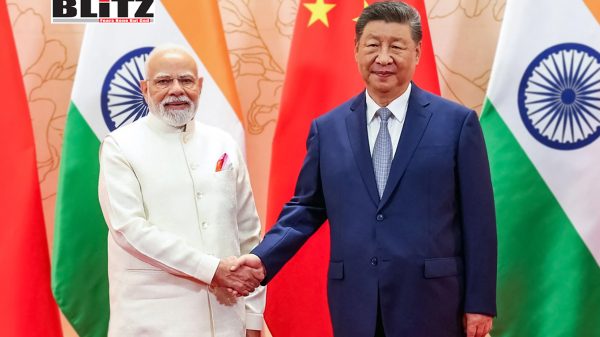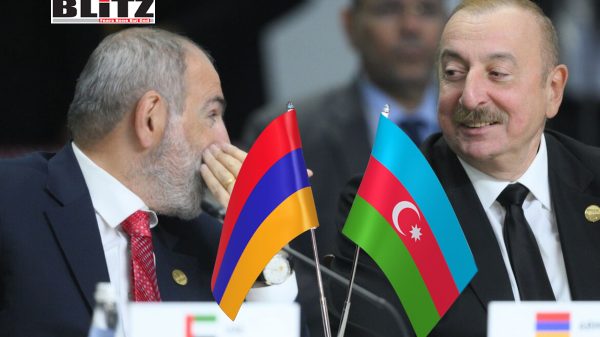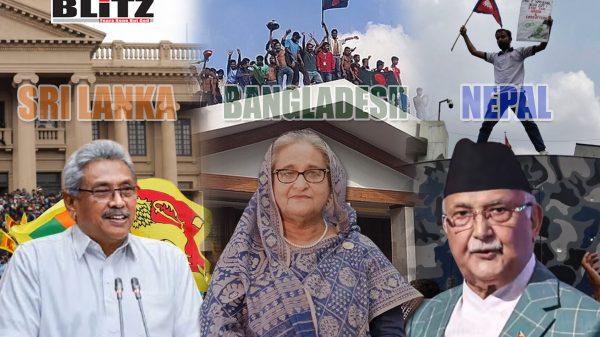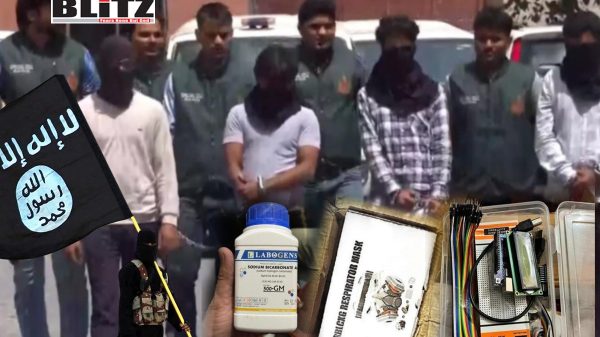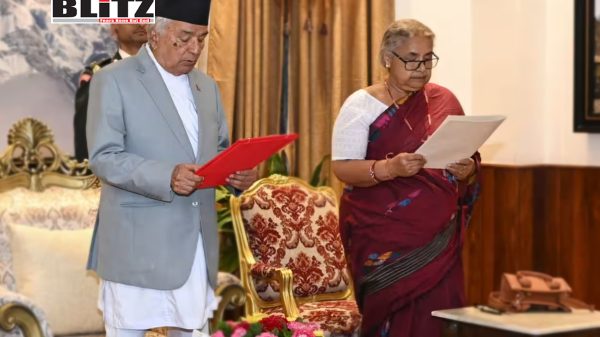How Nepal escaped the fate of Bangladesh: The Deep State’s failed plot
- Update Time : Sunday, September 14, 2025
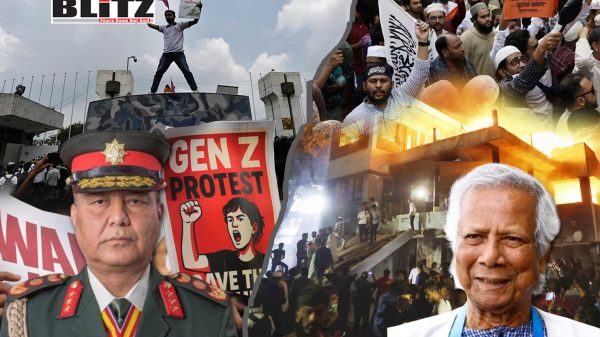
Across South Asia, a dangerous pattern is emerging: so-called “popular uprisings” fueled by external forces and hijacked by Islamists, opportunists, and globalist conspirators. What recently unfolded in Nepal eerily mirrors the jihadist-engineered coup in Bangladesh in 2024. Behind the façade of youthful discontent, corruption protests, and calls for reform lies a sinister hand – the US Deep State – deploying its local mercenaries, NGOs, and media propaganda to destabilize sovereign nations and weaken India’s natural sphere of influence. Nepal’s revolt was not organic; it bore the unmistakable fingerprints of a carefully choreographed plot.
What the world has witnessed in Nepal – the ouster of a corruption- and nepotism-plagued government led by Prime Minister K. P. Sharma Oli, a notoriously anti-India figure – was a chilling replay of the events in Bangladesh a year earlier. In both cases, violent uprisings were meticulously designed and executed by the US Deep State, using a toxic cocktail of disinformation, foreign funding, and extremist infiltration.
The Bangladesh precedent
Bangladesh has historically faced repeated attempts at destabilization. Since its independence in 1971, the country has endured coups, counter-coups, and conspiracies engineered both internally and externally. The 1975 assassination of Sheikh Mujibur Rahman, opened the door to military juntas that courted Islamist elements and dismantled Bangladesh’s secular identity. Later regimes – including those under General Ziaur Rahman and General H. M. Ershad – used Islamist parties as political tools, embedding extremism into state structures.
But the most shocking turn came on August 5, 2024, when the elected government of Prime Minister Sheikh Hasina was toppled in what can only be described as a jihadist coup. Cloaked as a “people’s revolt”, it was in reality a blood-soaked conspiracy backed by Washington’s policy mandarins and their Islamist partners. Hundreds of civilians, including members of law enforcement, were butchered in the streets.
In the aftermath, Bangladesh was engulfed by chaos: extortion rackets, mob lynching, attacks on Hindu minorities, and a resurgence of jihadist organizations once crushed under Hasina’s firm hand. The so-called “interim regime” of Muhammad Yunus – installed without constitutional legitimacy – has since presided over an Islamist free-for-all, allowing terrorist forces to flourish while the prospect of fresh elections fades into uncertainty.
Nepal on the brink
Nepal’s unrest in September 2025 unfolded with alarming similarity. Long simmering frustrations with corruption, governance failures, and unemployment were weaponized into violent revolt. On September 10, mobs stormed parliament, torched the Supreme Court, and set ablaze the residences of five former prime ministers. The state teetered on collapse; Nepal seemed leaderless and rudderless.
It was then that General Ashok Raj Sigdel, Chief of the Nepali Army, intervened. Appearing in a televised address, he called for calm and restraint. Unlike in Bangladesh, where the army remained passive and complicit, Nepal’s military acted decisively, patrolling the streets of Kathmandu, protecting vital infrastructure, and engaging protest leaders in dialogue.
Interestingly, the protests were spearheaded by so-called “Gen Z” activists who initially demanded reforms but quickly claimed that their movement had been hijacked by “opportunists”. This mirrors Bangladesh, where legitimate grievances were swallowed by jihadist infiltration and foreign-backed chaos. The difference in Nepal was the timely intervention of the army, which prevented total disintegration.
Historical echoes: Nepal’s Maoist insurgency
Nepal has lived through violent insurrections before. The decade-long Maoist insurgency (1996–2006) claimed more than 17,000 lives and brought the monarchy to its knees. At the time, the insurgency was portrayed as a “people’s movement”, but it was heavily fueled by external actors and ideological networks eager to destabilize the Himalayan kingdom. The echoes of that era resonate today: a mix of genuine frustration, violent opportunism, and foreign manipulation.
But unlike the Maoist insurgency, which eventually transitioned into a peace process, the 2025 unrest threatened to push Nepal into the kind of Islamist-jihadist chaos that now grips Bangladesh. The plot to weaponize Nepal’s youth against the state was not spontaneous – it was meticulously designed. The burning of symbols of sovereignty – parliament, the Supreme Court – signaled a deeper objective: to decapitate Nepalese institutions and replace them with a pliant, foreign-influenced regime.
Sushila Karki: A pragmatic choice
Amidst the flames of unrest, a consensus began to emerge around former Chief Justice Sushila Karki as interim prime minister. Karki, a respected jurist, accepted the responsibility of the interim prime minister at the urging of Gen Z protesters and the army.
In her first remarks, she warmly acknowledged India’s role and praised Prime Minister Narendra Modi, saying, “I greet Prime Minister Modi. I have a very good impression of him”.
Karki’s deep ties with India – having studied at Banaras Hindu University in the 1970s – position her as a stabilizing force who understands Nepal’s civilizational and economic bonds with its southern neighbor. Her leadership was further endorsed by Kathmandu’s Mayor Balendra Shah, who urged youth to show “maturity and responsibility” in this unprecedented moment.
Alongside her, Kul Man Ghising – the technocrat credited with resolving Nepal’s chronic power crisis – is expected to take an important role, signaling that the interim setup is focused on stability and governance rather than ideology.
India’s strategic calculus
For India, the developments in Nepal are more than a neighbor’s domestic crisis – they strike at the heart of its regional security architecture. India and Nepal share a 1,770-kilometer open border that is both a lifeline and a vulnerability. Any instability in Nepal risks spilling over into India’s heartland, particularly Uttar Pradesh and Bihar, where cultural and familial ties are strong.
More critically, a destabilized Nepal could become fertile ground for jihadist infiltration, just as Bangladesh has under Muhammad Yunus’s regime. Pakistan’s ISI has long eyed Nepal as a potential staging ground for anti-India operations, exploiting the porous border and weak governance. If Washington’s Deep State or Islamist proxies succeed in subverting Nepal, India’s security calculus would be upended.
Economically, Nepal depends heavily on Indian exports – particularly fuel, food, and manufactured goods. Bilateral trade exceeds US$8.5 billion annually, making India Nepal’s largest economic partner. Religious and cultural ties are equally deep, with sacred sites like Muktinath drawing thousands of Indian pilgrims every year.
In short, Nepal is not just another neighbor; it is an extension of India’s civilizational space. Protecting Nepal’s stability is as much about safeguarding India’s cultural and security frontiers as it is about geopolitics.
Bangladesh: A warning to Nepal
While Nepal appears to have pulled back from the brink, Bangladesh serves as a stark warning of what happens when foreign-engineered revolts succeed. Over a year after Sheikh Hasina’s ouster, the country is mired in chaos.
Muhammad Yunus, propped up by Western backers and globalist financiers like the Clintons and Soros, has presided over an illegitimate regime that has emboldened jihadists, empowered radical parties like the BNP, and allegedly engaged in massive corruption. Elections are nowhere in sight, and Yunus’s Islamist allies openly dream of transforming Bangladesh into another Afghanistan.
The contrast could not be sharper: Nepal, rescued by its army’s timely intervention, versus Bangladesh, abandoned to the mercy of jihadists and foreign puppeteers. One nation resisted; the other succumbed.
The events in Nepal and Bangladesh are not isolated – they are part of a broader strategy to destabilize South Asia, weaken India, and empower Islamist and globalist networks. The US Deep State, working through NGOs, media allies, and local proxies, has perfected the art of turning grievances into revolutions, revolutions into coups, and coups into chaos.
Nepal narrowly avoided disaster because its army and civil society acted in time. Bangladesh, tragically, remains trapped in a jihadist quagmire. Unless decisive international pressure is applied and India asserts its stabilizing influence, Bangladesh risks becoming the next Afghanistan – a haven for extremists and a threat to regional peace.
The choice before South Asia is stark. Nations can either resist the machinations of foreign powers and safeguard their sovereignty, or they can surrender to chaos and become pawns in a dangerous geopolitical game. Nepal has shown that timely action and unity can thwart subversion. Bangladesh illustrates what happens when a nation is betrayed from within.
If South Asia is to remain stable, sovereign, and free, it must recognize the enemy within and the hand behind the curtain. The battle for the future of the region has already begun.



